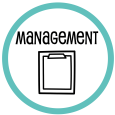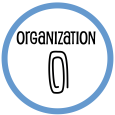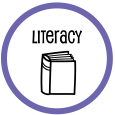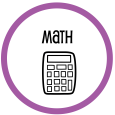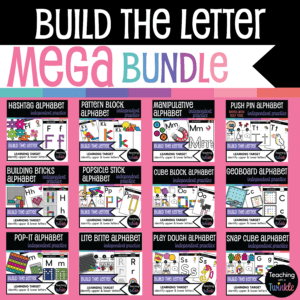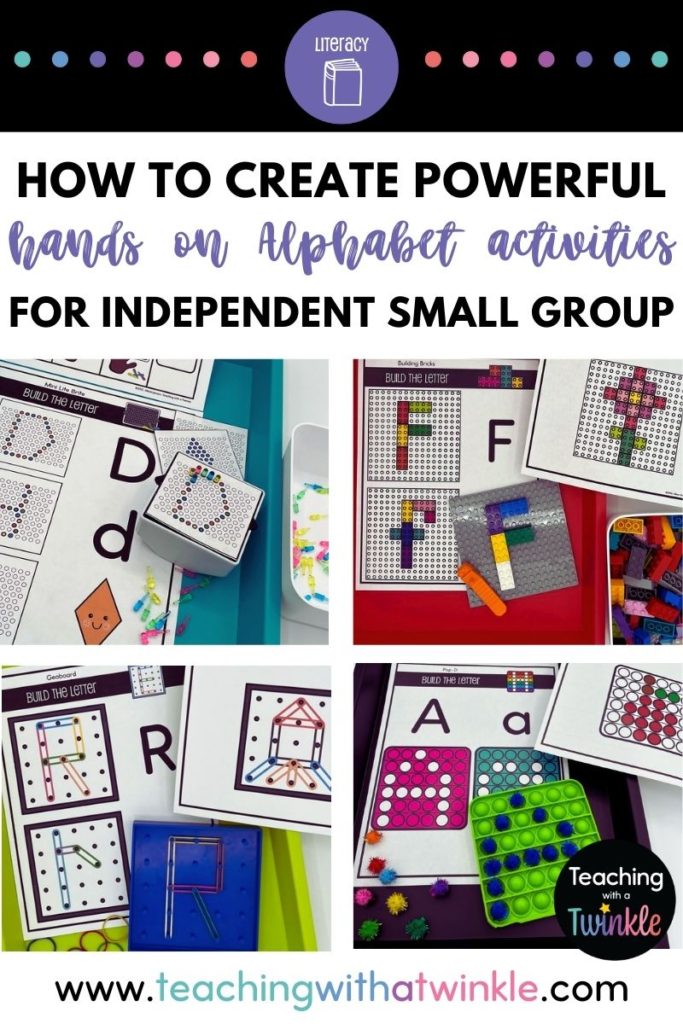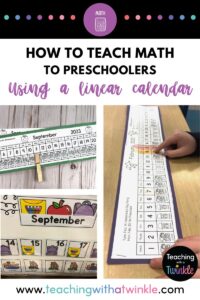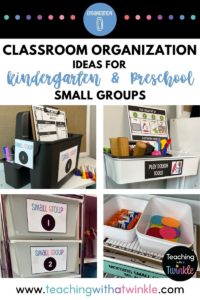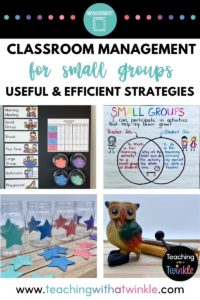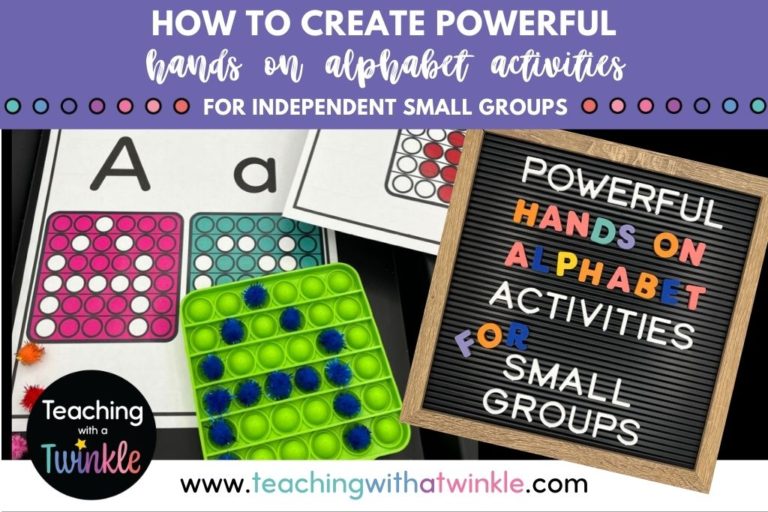
Finding hands on alphabet activities for little learners that are engaging and designed for independent practice can feel like an impossible task. I know that feeling all too well, teacher friend. Searching the online world for what I needed took so much time. In most cases, I came up empty handed or with a resource that only partially fit my needs. That’s why I created my own hands on alphabet activities specifically designed for pre-k and kindergarten students to use independently. I am delighted to share the alphabet activities I have created and how they will set your independent small group up for success!
If you are looking to get your small groups up and running, check out the 5 Steps To Setting Up Successful Small Groups in your Preschool or Kindergarten Classroom. This FREE resource is a roadmap to getting your small group routine ready for the year!
Advantages To Hands On Letter Activities
Reinforcing Alphabet Letters
No matter how you teach the alphabet, these interactive alphabet activities will continue to expose your students to letters and reinforce their alphabetic knowledge in a fun play-based way. These activities do not tell you how to teach the alphabet, rather, they are a tool to reinforce alphabet letter concepts. And best yet, your students will be pumped to get started!
Benefits Of Hands On Learning
Hands-on learning is all about learning by DOING. There are so many benefits to hands-on learning! It is developmentally appropriate, it supports multimodal learning (using multiple senses), it is play-based, and it provides opportunities to explore concepts in a concrete way, just to name a few. When students are actively engaged in their learning, they are more likely to retain and understand the information. That is exactly what we want as educators!
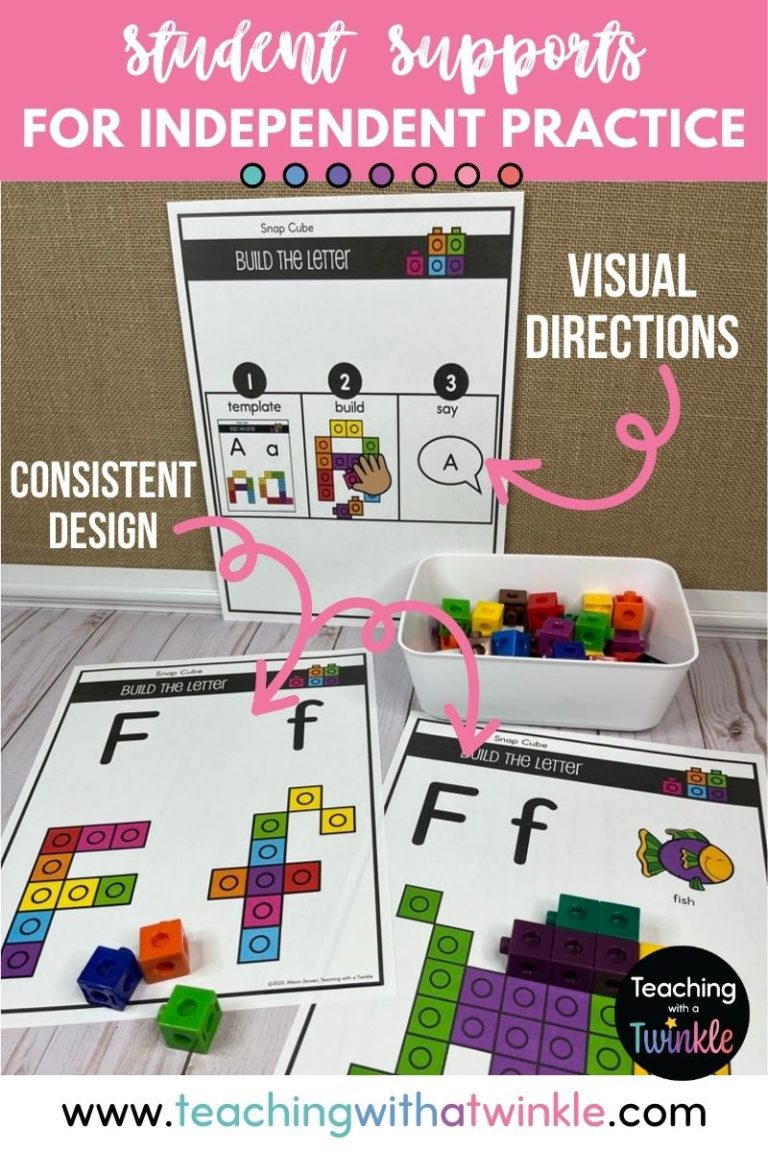
Supporting Independent Practice
Pre-k and kindergarten students need support in place in order to successfully work independently. First and foremost, we (the teacher) need to believe that our students are able to work independently…because they CAN! For more support ideas, head on over to my blog post, Everyday Classroom Management for Small Groups: Useful and Efficient Strategies.
Every resource that I create includes visual directions for students to reference while doing the activity. The very simple 3 step (occasionally a 4th step) direction page is a visual reminder on how to complete the activity. Having visual directions that illustrate the sequence of the activity is a life saver! This fosters independence and responsibility within students.
All of the letter activities have a simple design and consistent layout. Keeping the design of the activity simple, reduces visual stimulation and helps students concentrate on their learning. A consistent layout within resources provides familiarity, which in turn, builds confidence within students because they already know what to expect. These seemingly simple design methods provide a positive impact during independent learning!
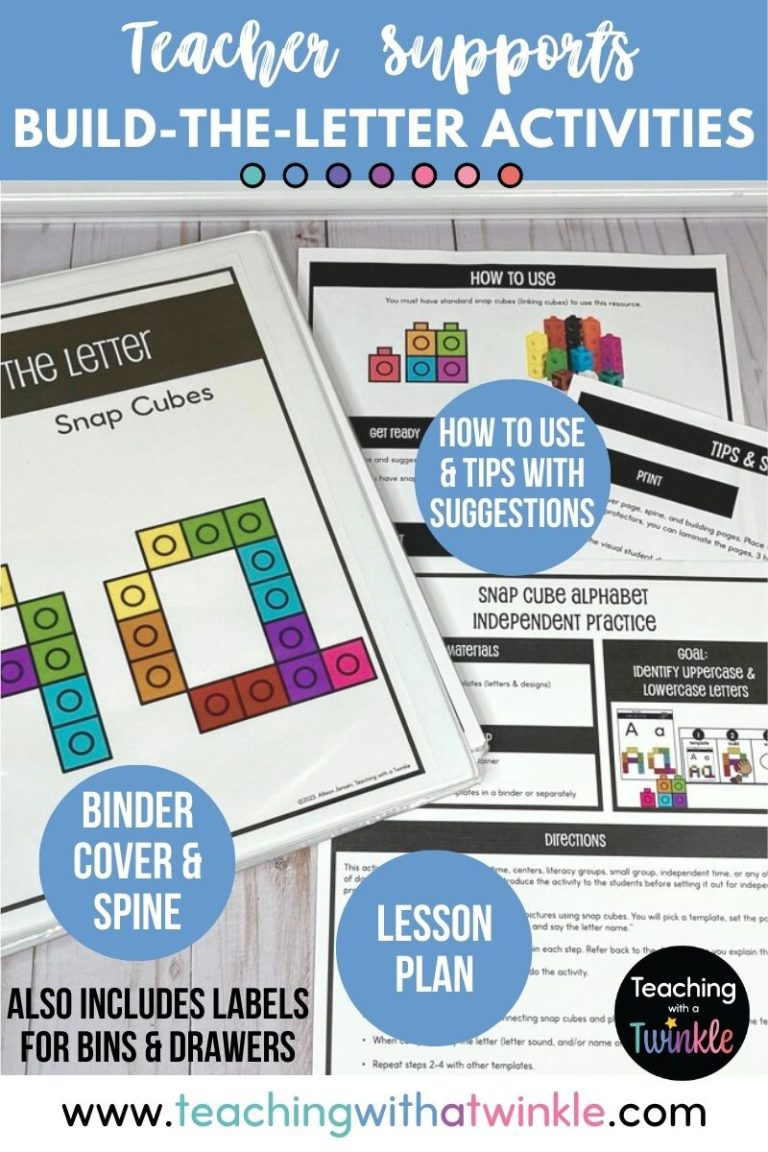
Teacher Supports
The teacher supports provided in my alphabet resources include how to use the resource, tips and suggestions for organization and printing, a lesson plan, a binder cover with spine, and labels for bins.
The how to use and tips & suggestion pages clearly describe the materials that you need to use the resource. It also includes printing tips and a variety of organization and implementation ideas to utilize in your classroom.
The lesson plan template is consistent across all of my resources. The lesson outlines the goal, or learning target of the lesson, a picture, a list of materials needed, initial set up, and a lesson structure that walks you through step by step on how to introduce and implement. The lesson plan is crafted so that anyone (assistant, substitute, volunteer, etc.) is able to instruct students through the activity. You won’t need to take time to explain how to do the activity. Now that is a time saver!
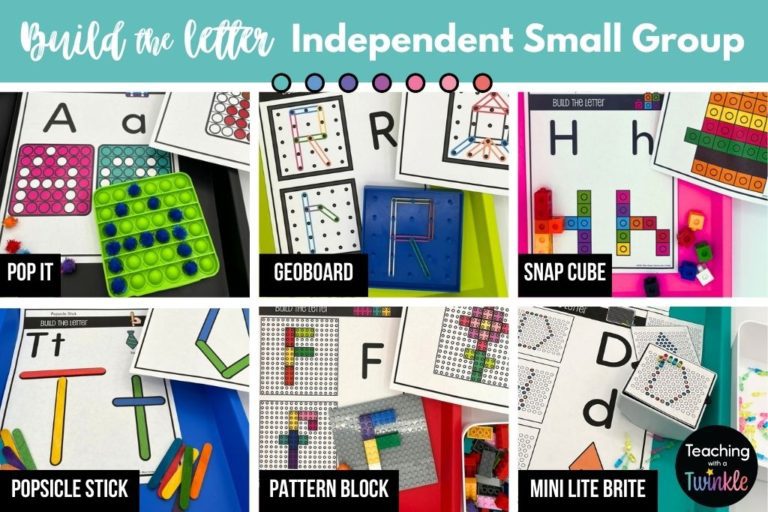
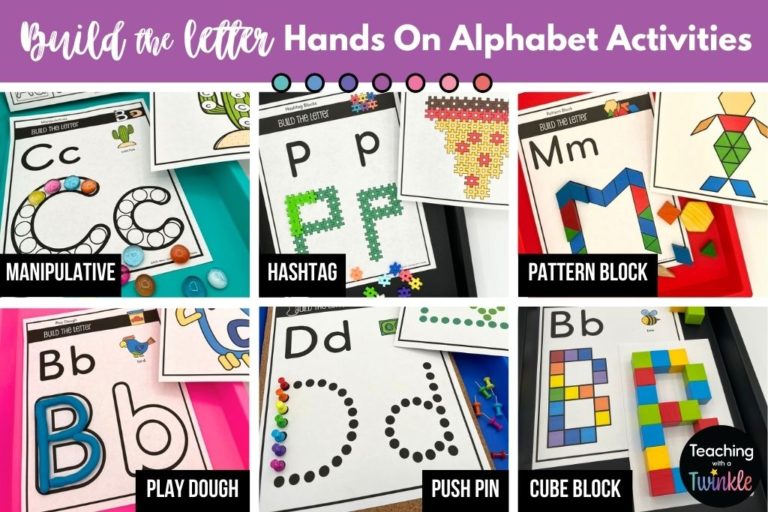
Alphabet Small Group Activities For Preschoolers & Kindergarteners
Build-the-Letter Activities
It is time we peek at these magical hands on alphabet activities that are perfect for an independent small group! Build-the-letter activities are very popular in my pre-k classroom. I call these activities “build-the-letter” because students literally build alphabet letters using manipulatives. When students focus on building the letters, they are concentrating on what the letter looks like (big or little lines, big or little curves). This gives them exposure to how letters are created, which reinforces their alphabetic knowledge.
In addition to building the uppercase and lowercase letters, students can build a picture that correlates to the letter sound. For example, you may build a “kite” for letter Kk.
There are 12 build-the-letter activities available! In addition to the “teacher supports” listed above, each resource comes with the uppercase letter, lowercase letter, beginning sound picture design, and visual student directions. Click the links to get a closer look at each build-the-letter hands on alphabet activities.
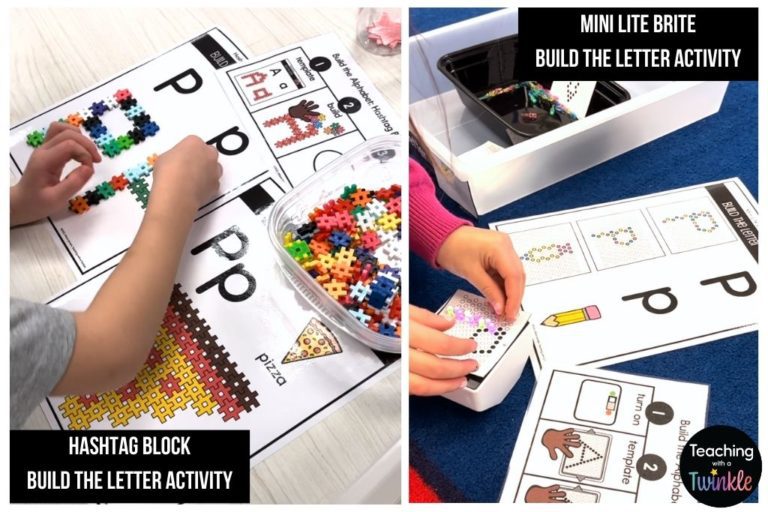
More Alphabet Letter Activities
There are even more ways to independently practice and reinforce alphabet letters! I have created a variety of resources to help expose our little learners to the alphabet and all 26 letters. These resources follow a similar design layout and come with visual student directions. Extra bonus, these resources include a Google Slides video that demonstrates how to do the activity.
These resources focus on the uppercase and lowercase letters of the alphabet. Beginning sound images are included on each page to help students make the connection to the sound of the letter.
I used these resources all year long as an independent small group activity. Each week, the activity stayed the same, but the templates and activity pages were swapped out for the new letter we were learning about.
My pre-k students had access to the above resources in addition to the build-the-letter activities. My students thrived with having the choice to choose their activity. I loved knowing that no matter what activity they chose, alphabet recognition was being reinforced!
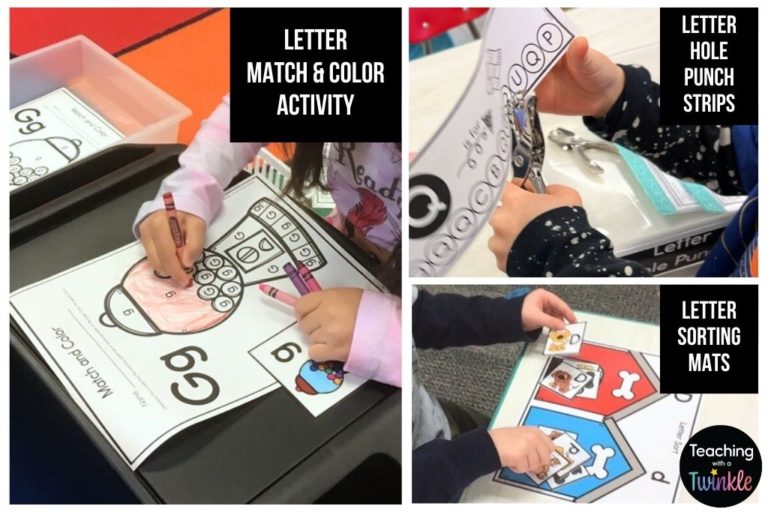
Organizing Independent Alphabet Activities
Printing and prepping these hands on alphabet activities is easy! How you organize the activities is up to you, but of course I have a few ideas to share for inspiration.
Your organization method will depend on your program’s expectations regarding how you teach the alphabet and when you will utilize the alphabet activities.
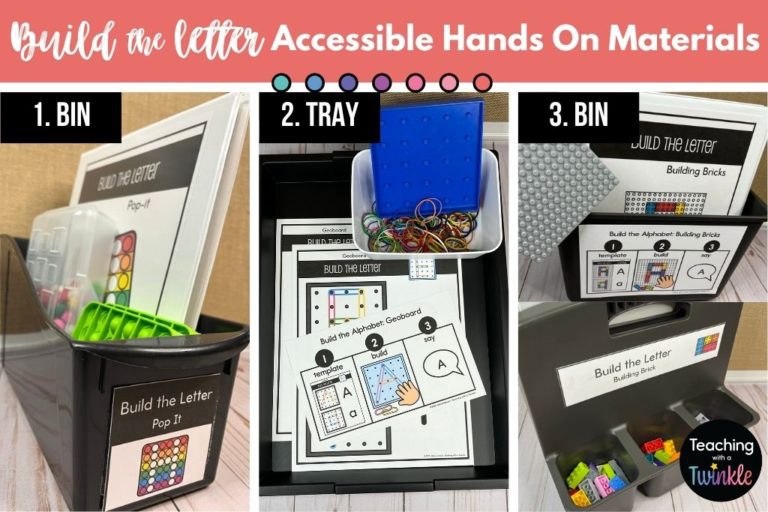
Letter Of The Week
If you are expected to teach the alphabet in a “letter of the week” style, then pull out all the activities for that particular letter. You can place them on individual trays, in bins, or in a drawer system as I describe in my example below.
My school requires me to teach one letter per week. I organize all my build-the-letter activities by alphabet letter. For example, I keep all the letter ‘Aa’ letter activities in a zipper bag. In the zipper bag, you will find the letter A templates for lite brite, pattern block, snap cube, pop it, push pin, etc.
Switching out the activities is simple! I grab my zipper bag for the current letter and the letter we will be learning about the following week. I open each drawer of the 10 drawer cart, and remove the template that is in there, placing it back into its zipper bag. Then I take the templates for the next letter and set it in the drawer. Done!
Using a binder with pocket dividers is another slick way to organize these hands on alphabet activities. In each pocket diver, place all the templates for one letter of the alphabet. When it is time to switch to a new letter, replace the templates with the new letter you will be learning about! Ta da! Done.
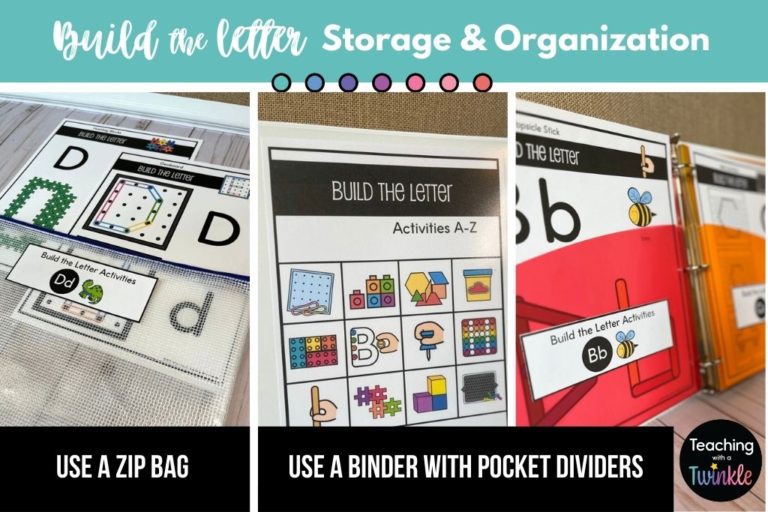
Focused Review
If you are targeting a few letters as your focus or for review purposes, then pull out all the activities for those letters. Again, use trays, bins, or a drawer system.
General Purpose
These alphabet activities can also be a general purpose resource that is available to students anytime during the day. Build-the-letter resources can be placed in page protectors and organized in a binder. Students can flip through the binder to the template they want to use and build the letter using the manipulatives. No need to take the template out of the binder.
Independent Small Group: My Classroom Example
I use the alphabet activities as an independent small group. In my room, students who go to the pink star table for small group time, will independently work on these letter activities. I have a 10 drawer cart that houses the activities. Each drawer has one activity in it. The expectation is that only one student can use a drawer at a time. If another child took the drawer (activity) that they wanted, choose another activity for now and circle back when the activity becomes available. Side note, I do allow my students to use the alphabet activities at play time as well.
First, students pick an activity and remove the entire drawer from the cart. They carry the drawer to the pink star table or the rug. If they choose to sit on the rug, they also have the option of using a lap tray. Next, students take out the materials, reference the visual directions, and do the activity. When they are finished with the activity, they put the materials back into the drawer and return the drawer to the cart. Now, they can choose a different activity from the cart. Rinse and repeat until small group time is over.
I want to share a quick tip for putting the drawer back in the cart. Have your students hold the drawer so the label on the front of the drawer is touching their belly. Then carefully slide it onto the tracks of the cart. This can be a little tricky for some kiddos. If that is the case, I tell them to set the drawer on the ground next to the cart and a teacher will put them away at the end. One more thing, the drawer can be returned anywhere on the cart. There is no particular order the drawers need to be in.
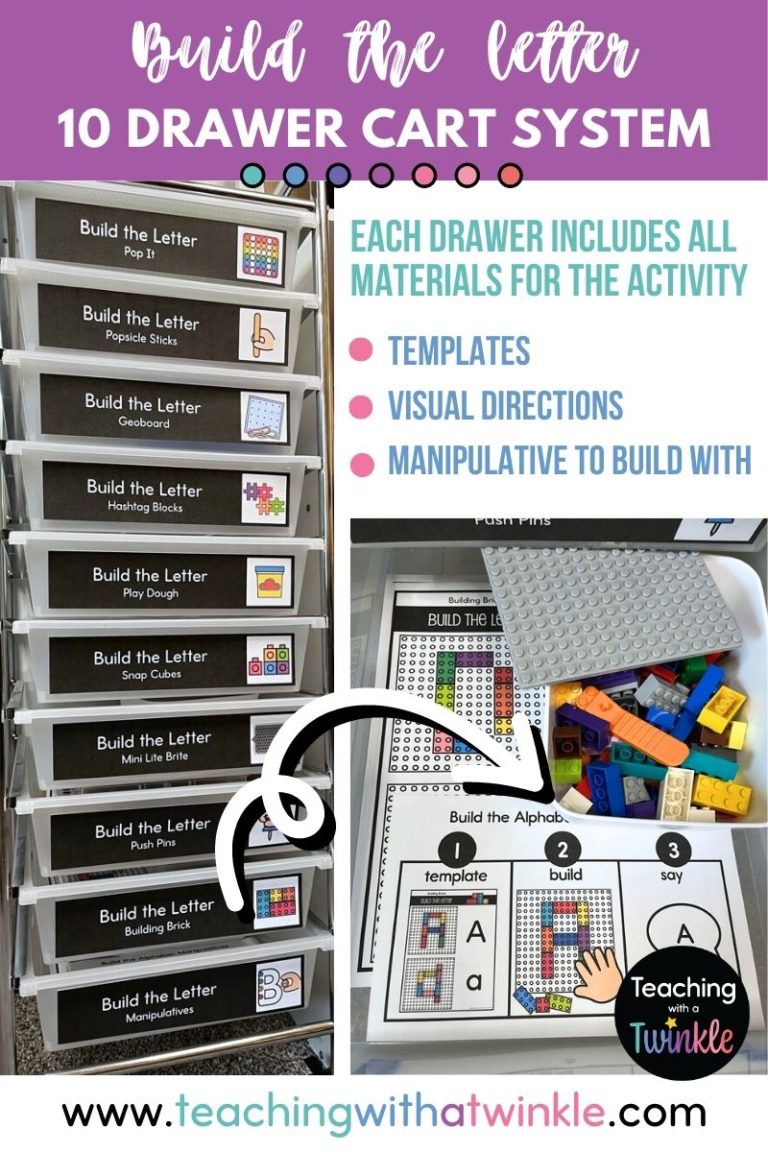
If I wasn’t afraid of heights, I would shout from the rooftops, “Independent alphabet small groups have changed my life!” Seriously. I highly recommend implementing these as an independent small group. Here is why I love them and why you will too!
Saves YOU Time
You already have so many things to plan. When you implement alphabet activities for an independent small group, you don’t have to spend time figuring out what activities your students will do. The activities are done for you and designed to engage and support independent practice.
Streamlines Your Routine
When you utilize hands on alphabet activities as an independent small group, you are providing consistency for students (and yourself). Students thrive when they have a set routine. They know what to expect, what to do, and how to do it.
Promotes Independence & Responsibility
Students build self-confidence when given opportunities to be independent. Allowing the students to work by themselves and choose which alphabet activity to do, gives them a sense of responsibility for their own learning. For all you pre-k teachers out there, this is a simple way to prepare your students for kindergarten. When students level up to kindergarten, they will need to attend to tasks independently.
Aligned to Learning Standards
Across the board, alphabetic knowledge is part of learning objectives, targets, benchmarks and standards. It is a foundational skill that supports reading success. No matter what curriculum you teach or framework you implement, being able to recognize letters, their sounds, and their shapes is essential. Jump on over to my Teachers Pay Teachers store to find all the alphabet resources you need and bundles at a discount!
I hope these hands on alphabet activities designed for independent small groups have inspired you to save yourself time and streamline your small group routine! And don’t forget, you are also fostering your students independence and promoting responsibility when you implement these standards aligned resources in your classroom. The cherry on top of this ice cream sundae? Your kiddos are having FUN while learning their letters! Hands on alphabet activities for the win!

